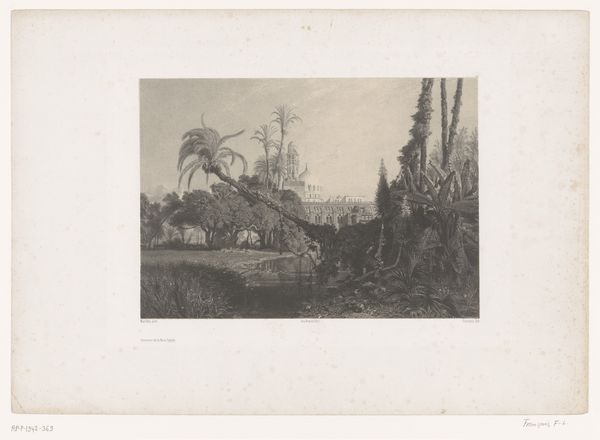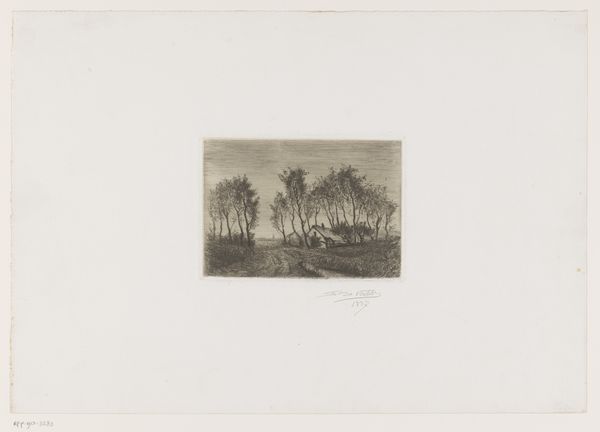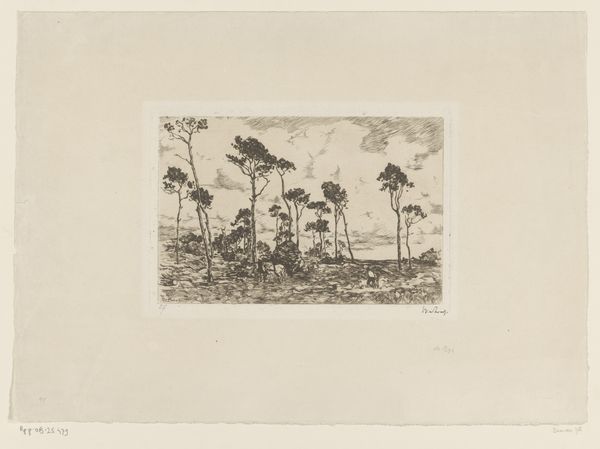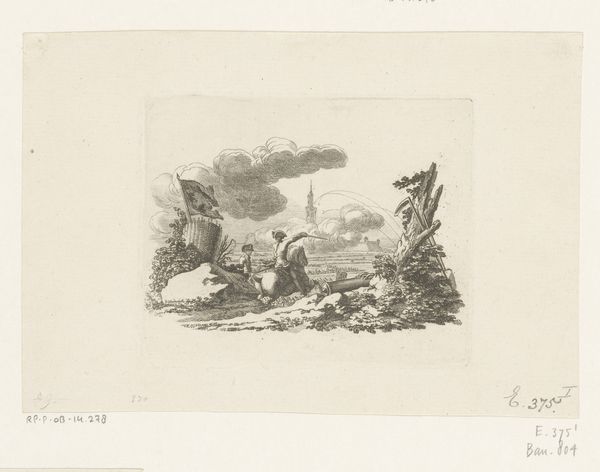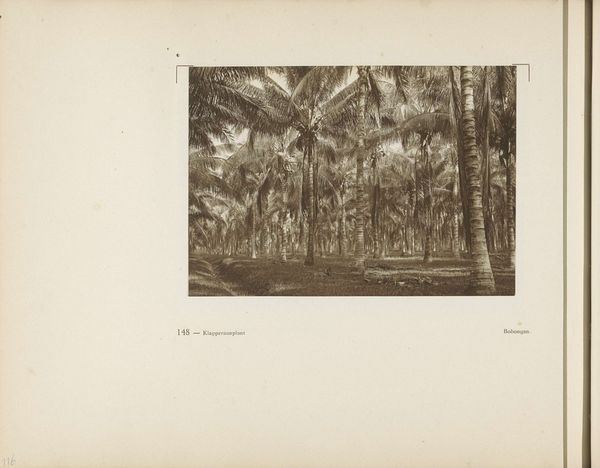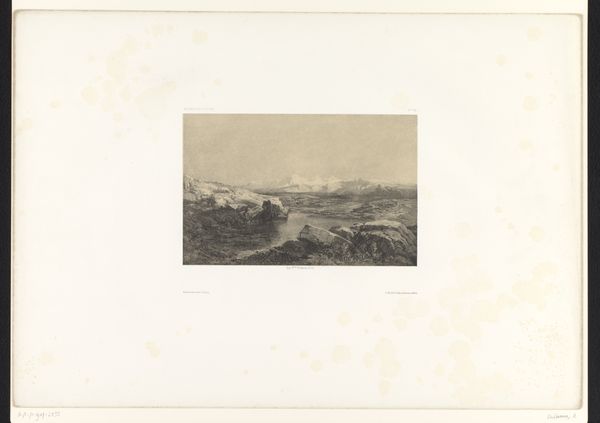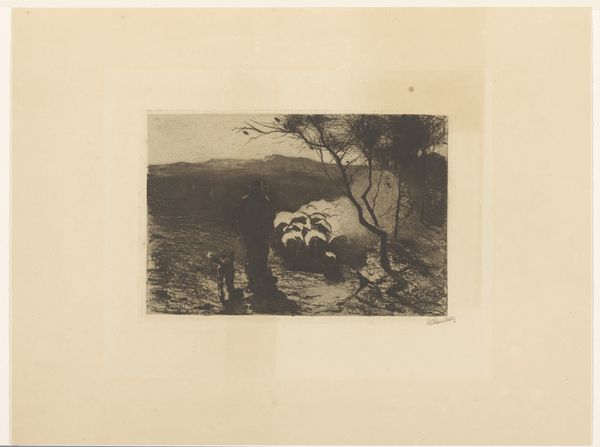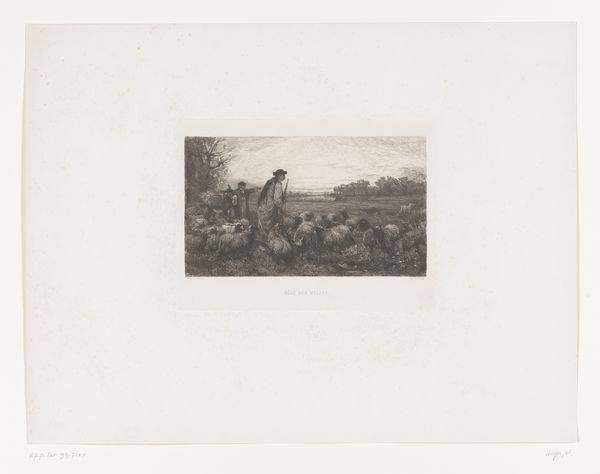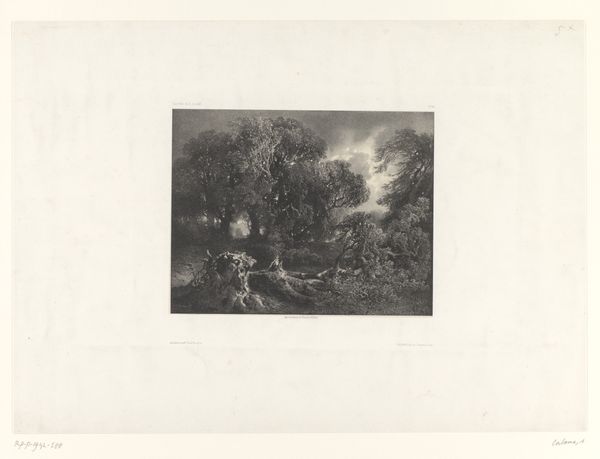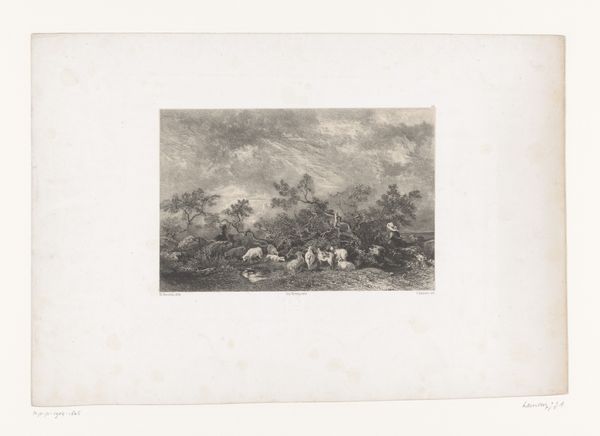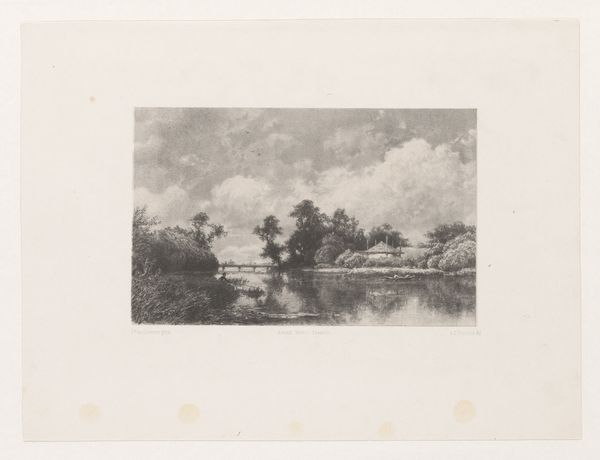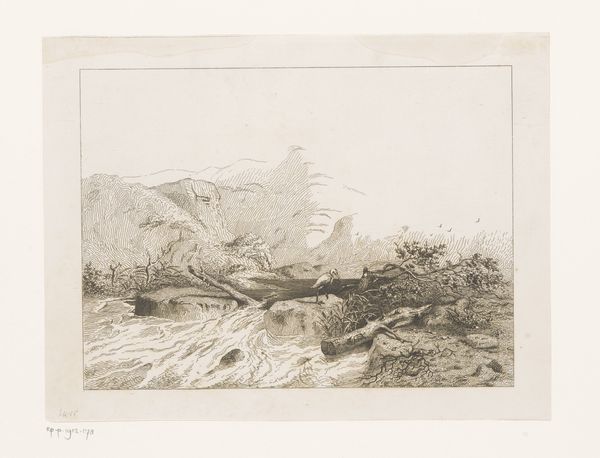
print, paper, engraving
#
print photography
#
ink paper printed
# print
#
landscape
#
paper
#
genre-painting
#
engraving
Dimensions: height 312 mm, width 449 mm
Copyright: Rijks Museum: Open Domain
Editor: This is "Mozes in het rieten mandje" – Moses in the Basket – an engraving by Adolphe Mouilleron, created sometime between 1848 and 1862. I’m struck by how such a potentially dramatic scene feels so quiet and contained. What's your interpretation of the work? Curator: The interesting question is why render such a potent biblical scene in such a serene manner? During the mid-19th century, there was growing fascination with the "Orient," and genre paintings depicting everyday life in exotic locales became fashionable. Mouilleron is engaging with a market that desires depictions of biblical scenes through an orientalist lens. Editor: So, it’s less about the religious significance and more about the visual appeal of the setting? Curator: Exactly. Notice how the details – the lush vegetation, the calm water, even the clothing of the figures – contribute to a sense of idyllic beauty. The artist uses the familiar biblical story to transport viewers to a romanticized, idealized version of the East. Who commissioned or purchased similar prints is always a mystery, one that offers valuable context if you’re lucky enough to uncover it. Editor: It’s interesting to think about how the same story can be told in so many different ways, depending on the social and cultural context. Curator: Precisely. And examining the motivations and expectations of both the artist and the intended audience helps us understand the role art plays in shaping perceptions and reinforcing existing power structures. Editor: I hadn’t thought about it that way before. Seeing art as more than just a beautiful image opens a new way to appreciate its value.
Comments
No comments
Be the first to comment and join the conversation on the ultimate creative platform.
